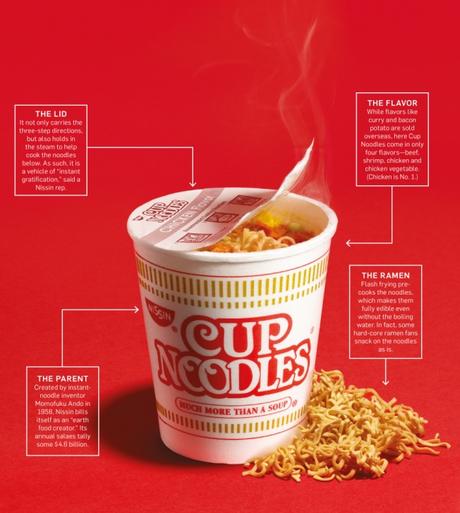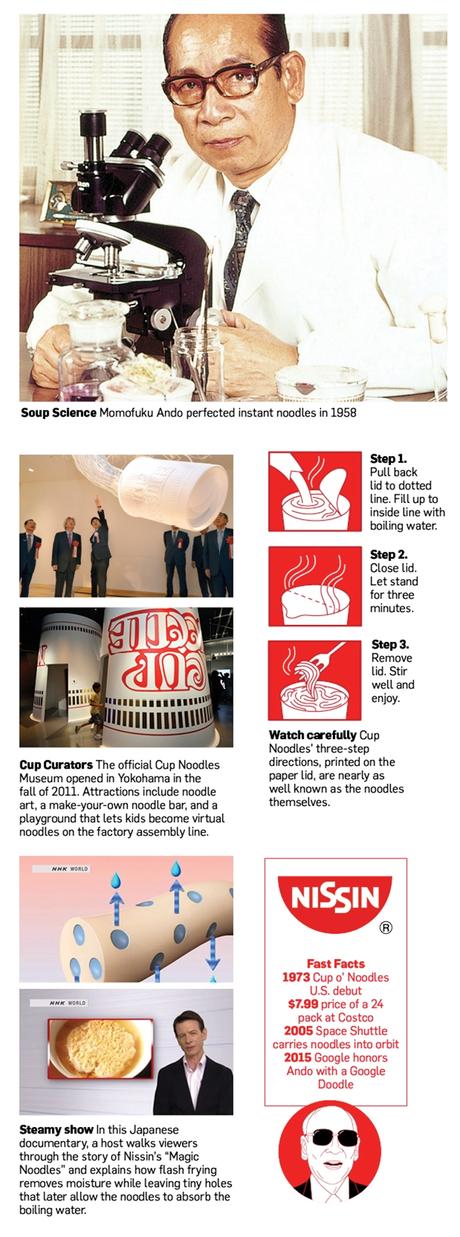See if you can identify the product associated with the following directions: "Pull back lid. Fill with boiling water. Let stand for three minutes. Stir well and enjoy."
Well, you either know it or you don't-and if you've ever been a liberal-arts major, lived in a large city or worked in any kind of creative industry (hello, millennials?), then you know it for sure.
In fact, even if you just made partner in a Beltway law firm, there's still a good chance you know Cup Noodles. It's not only the star brand in the instant-food hit parade, but it's also among the most ubiquitous products in shelf and cupboard. To date, parent company Nissin has sold well north of 30 billion cups of the instant ramen. How? Some say because it's cheap (about 33 cents a cup), while others say it's tasty. A Nissin spokesperson insists it's both: "While Cup Noodles is an inexpensive meal option, if it didn't taste good, we wouldn't see as many people buying the product."

There's something else in play here, too-a kind of global food fraternity that eating from one of those 2.5-ounce white cups makes you a member of. "Cup Noodles is a symbol of forced economy, making do, the sacrifices we made to get to where we are," said Charlie Hopper, a writer for ad shop Young & Laramore, which works with leading CPG brands. "There's pride in that nostalgia, those years of not being able to afford much, and when you're buying Cup Noodles, whether you really have to economize or not, you feel that you're tapping into something bigger than yourself."
Nobody would have been happier to hear that than Cup Noodles inventor Momofuku Ando, whose goal was not to create an iconic brand but to pull his country out of its misery. In 1945, the day after the Japanese surrender in World War II, Ando was walking through a bombed-out Osaka when he noticed a long line of people waiting patiently for soup. Boiling noodles took time, but Ando figured there had to be a way to make them quickly, easily and cheaply. He later said: "People can only be content when there is enough food." His breakthrough finally came in 1958 when he sprayed raw noodles with chicken soup and then fried them in tempura oil. The precooking preserved the noodles for easy storage, and a little hot water cooked them fast. Chikin Ramen appeared in 1958, and Cup O' Noodles hit store shelves in the U.S. in 1973.
Which is pretty much the end of the story. Another reason Cup Noodles (the preposition "O'" got dropped in 1993) has endeared itself to two generations is its unapologetic sameness. "Cup Noodles has resisted the urge to hipsterize itself," Hopper said. "It's the same old humble, useful, possibly nutritious friend from college."

